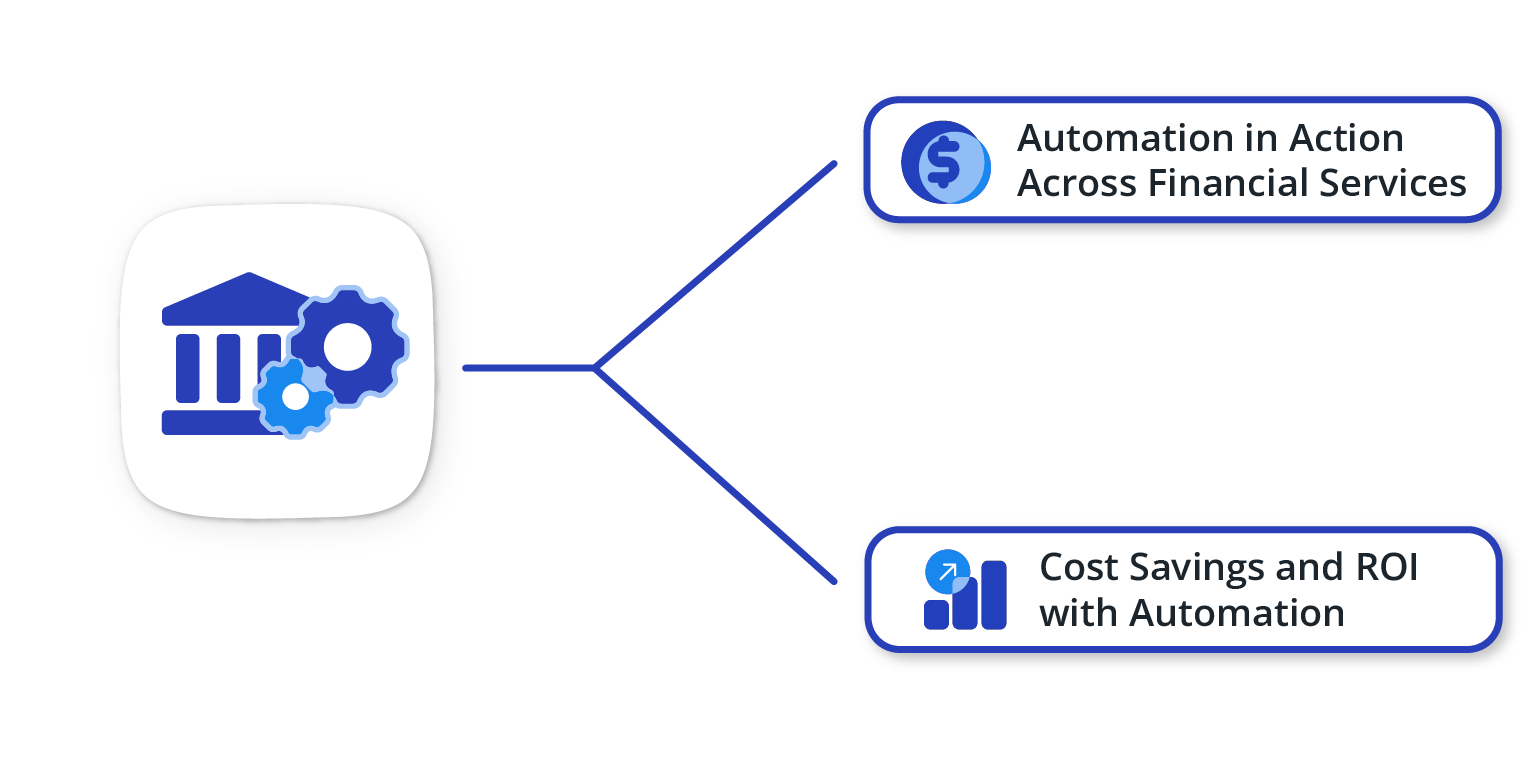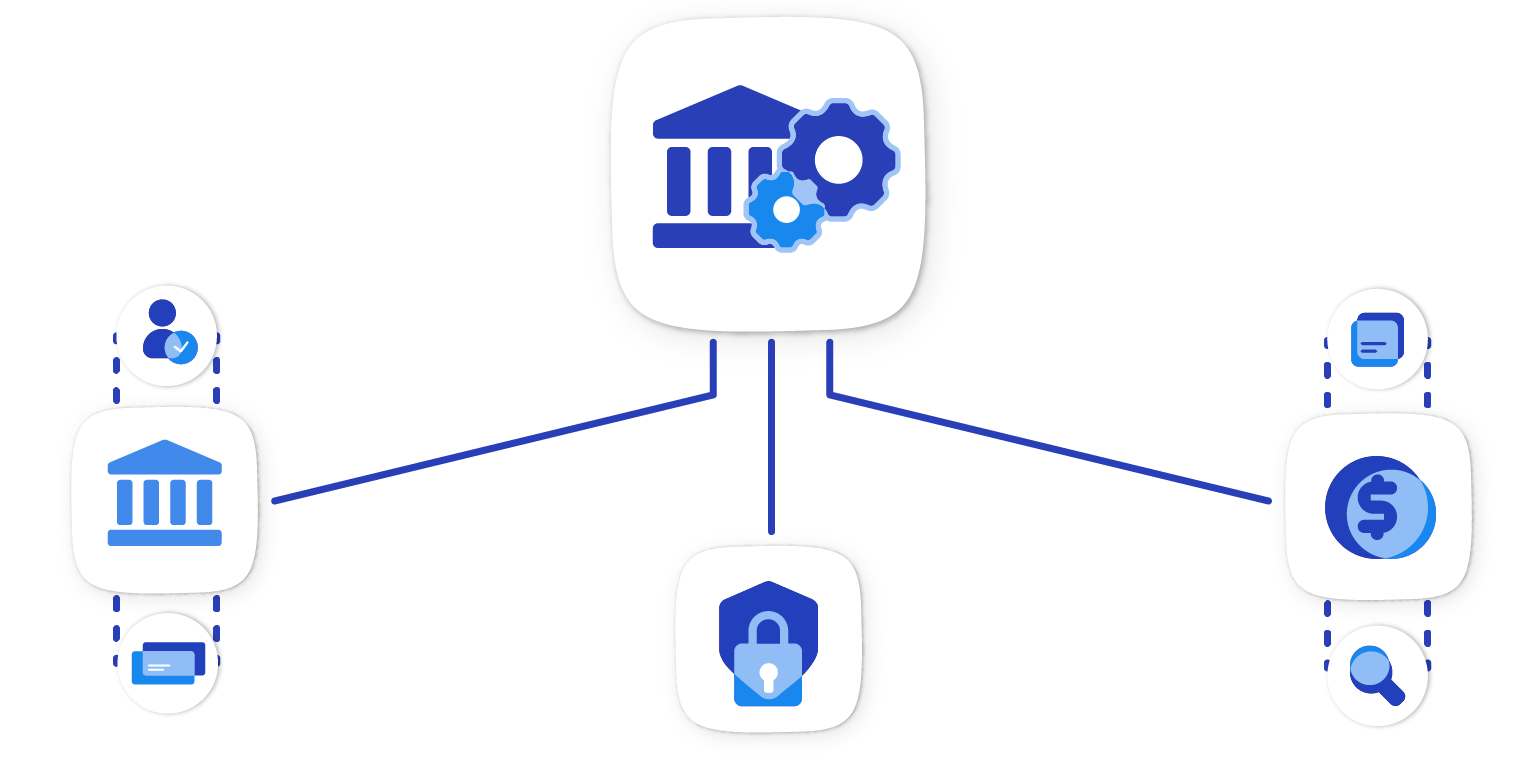The financial industry is facing a turning point. Fintech has surged ahead, causing traditional banks to worry about losing revenue.
But it’s not all grim; there’s potential in this challenge. If banks embrace banking automation like FinTech does, they can stay ahead.
Let’s dig into the modern challenges of the banking world and see how automation offers a strategic way forward.
What Is Banking Automation?
When you think about the early days of banking, you’d probably imagine ledgers, inkwells, and long queues. It was a system entirely reliant on humans. But as populations grew and transactions surged, this manual system began to falter.
Fast forward to the computer age, and basic tasks like checking balances and making transfers became automated, speeding things up and reducing errors.
But now, with artificial intelligence (AI) and machine learning (ML), banking is smarter and more dynamic than ever. Modern banking tools can learn from patterns, predict trends, and interact in real-time. It’s not just about doing things faster but also smarter.
Simply put, banking automation is the industry’s leap into the future, harnessing technology to serve its customers better and smarter.
How Financial Institutions Are Leveraging Automation
Financial institutions have been quick to recognize the massive potential of automation.
Many banks now use AI-powered chatbots in customer service. No more waiting on calls; these AI-driven bots provide instant assistance anytime, enhancing customer interactions.
Meanwhile, robotic process automation (RPA) streamlines backend processes, from account updates to transaction verifications. Predictive analytics is also on the rise, allowing banks to forecast market trends and tailor their services accordingly.
And on the security front, with cyber threats looming, banks employ automated systems to detect anomalies and fend off breaches in real-time.
By embedding these automated systems at the heart of their operations, leading banks are setting new industry standards and reshaping modern banking.
The Impact of Banking Automation
Let’s explore the far-reaching implications of banking automation across various aspects of banking.
What Can Banking Automation Do for Me?
Banking automation is more than just a new tech—it changes how banking works for you.
Consider efficiency: Gone are the days of lengthy waits for transactions. With automation, banking activities such as loan approvals or account openings are done in mere moments instead of days.
Moreover, as banking demands change, automation keeps up, ensuring smooth services even during busy times. It’s also consistent; while humans might make errors in monotonous tasks, automation is precise, keeping records accurate.
So, in an era where every second counts, banking automation ensures both your time and money are well-spent, offering a quick and spot-on banking experience.
Automation in Action Across Financial Services
Automation is making its mark in finance in transformative ways.
Marketing now uses algorithms for personalized campaigns based on user behavior, ensuring clients receive messages that truly resonate.
In customer experience, the change is even more visible. AI chatbots, available 24/7, handle inquiries and guide users without the wait time usually associated with human support.
But automation isn’t just enhancing interactions; it’s also bolstering security. In fraud prevention, real-time monitoring systems flag suspicious activities, ensuring unparalleled protection for banks and their clients.
From outreach to defense, automation is fine-tuning financial services for the better.
Cost Savings and ROI with Automation
Beyond just modernizing operations, automation is directly impacting bank finances. Banks are seeing significant cost reductions as manual, often error-prone tasks get replaced by more reliable automated processes. Fewer mistakes mean less rework and fewer compensations.
Additionally, streamlined operations mean quicker service delivery, reducing the need for extensive human resources and associated overheads. In fact, several big banks have experienced such efficiencies and reported savings in millions.
Plus, when you consider the increased customer retention and acquisition due to improved services, the ROI for banking automation becomes undeniable. In short, automation is more than a tech upgrade—it’s a strategic financial asset.
Areas Affected by Automation in Banking
Automation is enhancing every aspect of the modern financial system.
Consumer Banking & Commercial Banking
Consumer and commercial banking are the two anchors supporting the financial industry. As they evolve, automation becomes a pivotal player, making processes smoother and customer interactions more efficient.
Customer Experience
No more drumming fingers on desks, awaiting service. With RPA, wait times are reduced. Opening a new account? It’s a breeze. Need to address a complaint? The system sorts issues before you even know there is one.
Cards and Payments
Thanks to automation, transactions are now instantaneous, and security checks for potential fraud are more vigilant, keeping your money safe.
Lending Processes
Automation is changing the lending game, making processes quicker while maintaining the accuracy that financial decisions demand.
Commercial Lending
Remember when getting a loan felt like pulling teeth? Those days are behind us. Automation accelerates application reviews, background checks, and approvals. What once took weeks now finishes in days or even hours.
Regulatory Compliance in Lending
Lending isn’t just about speed; it’s about diligence. Automated systems carefully check loan applications, ensuring each adheres to regulatory guidelines. No oversights, no legal missteps—just seamless, compliant processing.
Risk & Compliance
Staying within legal boundaries and minimizing risk is crucial in the banking industry. Automation handles this effortlessly. By continuously monitoring transactions, behaviors, and patterns, it ensures banks operate within set protocols and keep potential threats at bay.
How to Implement Banking Automation
Embracing banking automation is no casual affair. It requires foresight, strategy, and determination.
Key Concerns and Challenges
When considering automation, banks often struggle with three main concerns.
First, and perhaps the most human, is resistance to change. People are attached to old systems and changing them can cause disruptions.
Along with this is the apprehension surrounding data security. With increasing cyber threats, trusting a new system becomes a deep concern. Lastly, the costs of integrating automation can’t be ignored.
However, instead of seeing these challenges as obstacles, they can be viewed as growth opportunities. Addressing them effectively requires a balanced mix of proactive leadership, strategic planning, and the right partners.
Strategies for Digital Transformation
Your journey should begin by identifying which areas are most ripe for automation. Is it customer service with its repetitive queries? Or back-end operations that still rely heavily on manual data?
Once these areas are identified, it’s essential to train your team. This isn’t just about teaching them to use new tools but instilling an understanding of the bigger picture—how these tools enhance their roles.
Then comes the crucial part: tool selection. Remember that the shiniest tool isn’t always the best fit. You need a solution that smoothly works with your existing systems, boosting efficiency without causing issues.
Case Studies of Successful Implementation
Among banking giants, JP Morgan Chase stands tall with its embrace of automation. By introducing bots to handle routine tasks, it has reallocated thousands of employee hours to more strategic endeavors.
Similarly, with its forward-thinking approach, Wells Fargo has leveraged AI chatbots. Now, its customers enjoy an enriched, immediate service experience, reflecting the bank’s commitment to innovation and customer satisfaction.
To successfully deploy banking automation, it’s essential to view it not as a mere tech addition but as a transformative strategy—one that reshapes operations, elevates service standards, and redefines the banking industry.
The Future of Banking Automation
With breakthroughs in AI and machine learning, automation in banking is primed for an evolution that’s nothing short of revolutionary.
Trends Shaping the Future of Automation in Banking
Today’s voice-activated banking systems might feel cutting-edge, but the future promises even more. Soon, your bank might notify you of big purchases or investment opportunities before you even think of them.
This predictive banking, backed by deep analytics and AI, will tailor financial suggestions based on personal spending habits, investment history, and financial goals. And it won’t stop there.
Biometric verifications, from retina scans to voiceprints, are set to make banking more secure and personal. We can also anticipate a surge in “self-healing” systems that auto-detect issues and resolve them, creating smoother banking experiences.
Preparing Your Institution for Automation
For banks looking ahead, the transition to this future isn’t just about buying the best software. It’s about cultural readiness. It starts with fostering an environment open to change and innovation.
Training programs should cover both the use and understanding of new systems. Teams should see how these tools make their jobs better and easier.
Collaboration with tech experts is also paramount. Establishing partnerships, investing in research, and staying updated with global trends will ensure the bank isn’t just following but leading the future.
The Dawn of a New Banking Era
Banking automation has redefined the financial industry, ushering in efficiency and precision at every turn. While challenges are a part of this evolution, they’re not insurmountable. With informed strategies and foresight, the rewards you reap can be monumental.
Ready to propel your institution into the next era of banking? Partner with Kizen for a smooth, strategic transition into the world of automation. Connect with us today.
Supplementary Resources
White Papers
Webinars and On-Demand Content
https://www.uipath.com/resources/automation-webinars/ai-powered-automation-in-financial-services
https://www.blueprism.com/5-ways-to-transform-financial-services-and-banking-with-rpa/











